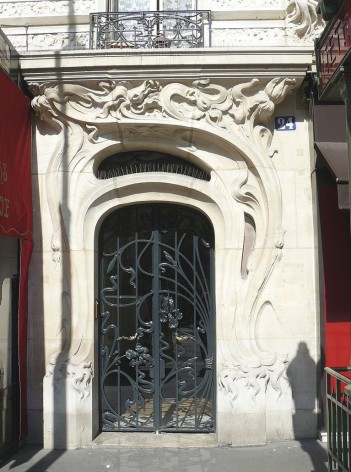Art Nouveau

Art Nouveau is an international style of art, architecture and applied art, Art nouveau was a design movement that emerged and touched all of design arts – architecture, furniture, fashion, graphic and product design during the 1890s and early 20th century (1894-1914). It was the first style of commercial art used consistently to enhance the beauty of industrial products. Art Nouveau was also a true international style embraced by all the Europe as well as America.
Art Nouveau is a French Name meaning (New Art) or (New Style), the name ‘Art Nouveau’ derived from the name of a shop in Paris, Maison de l’Art Nouveau that showcased objects that followed this approach to design.
Art Nouveau is characterized by:
- Highly-stylized, flowing, curvilinear designs often incorporating floral and other plant-inspired motifs (Organic Forms)
- Asymmetrical shapes.
- Arches and doors are common.
- Cast iron merely used as columns in the building field.
- And Steel as the symbol of the first industrial revolution
Art Nouveau represents the beginning of modernism in design (Modern Art & Architecture).
We can divide Art Nouveau Architecture into two main tendencies that could broadly termed:
1- The Organic
Hector Guimard, Victor Horta, Van de Velde, Antonio Gaudi .
2- The Rationalist
Louis Sullivan, Charles Rennie Mackintosh, Otto Wagner, Auguste Perret .

Gate of the Castel Beranger by Hector Guimard, 14 rue de la Fontaine, Paris (1898)

Doorway at place Etienne Pernet, 24 (Paris 15e), 1905 Alfred Wagon, architect.

Gaudi house Barcelona, Spain 1903


